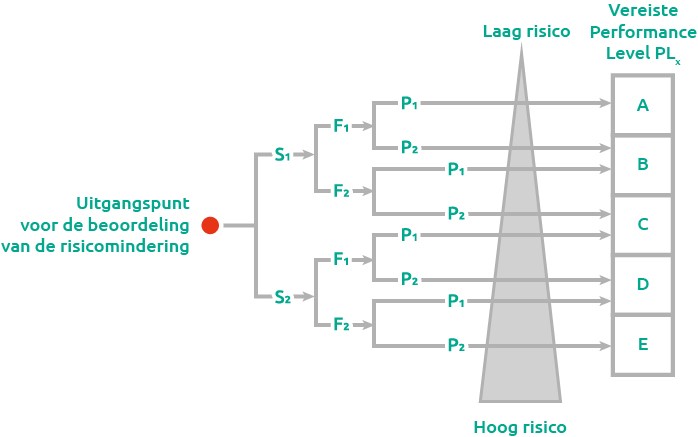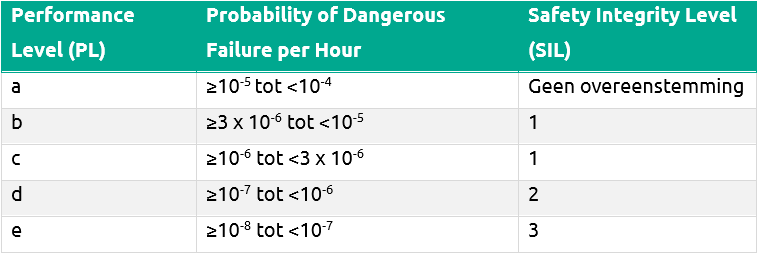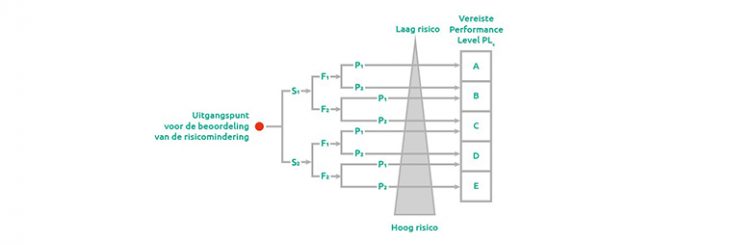Safety Integrity Level (SIL)
SIL stands for Safety Integrity Level (EN-IEC 62061) and is a part of Functional Safety. SIL is a method to assess electrical, electronic, and programmable electronic systems and refers to quantifying the risk reduction of systems. SIL is classified into four levels; SIL 1, 2, 3, and 4 (which rarely occurs). Each level is related to a certain degree of risk that the system may fail. The likelihood that this will actually happen and the impact of the consequences of system failures together form the risk. How high a system needs to be SIL certified depends on the application (the likelihood of failure and its impact). A higher SIL level is not always better. For example, the risk associated with SIL level 3 may not apply at all to the relevant application. Moreover, an investment in a higher SIL level is not always realistic.
Performance Level (PL)
PL stands for Performance Level (EN-ISO 13849). The PL indicates the degree to which a control system can fulfill a safety function. Five Performance Levels are distinguished; a (lowest) to e (highest). To determine which PL is required, a number of steps are followed; the so-called risk graph:
- Severity of injury
- S1: Minor injury
- S2: Serious injury
- Frequency/duration of exposure to danger
- F1: Rare to less frequent and/or the exposure time is short
- F2: Frequent to continuous and/or the exposure time is long
- Possibilities to avoid danger
- P1: Danger can be avoided under certain circumstances
- P2: Danger is not (or hardly) avoidable

Safety Integrity Level (SIL) and Performance Level (PL)
SIL can, in many ways, be related to PL, despite SIL having four levels and PL five levels. When both SIL and PL are integrated into one table, it would look approximately as follows*:


